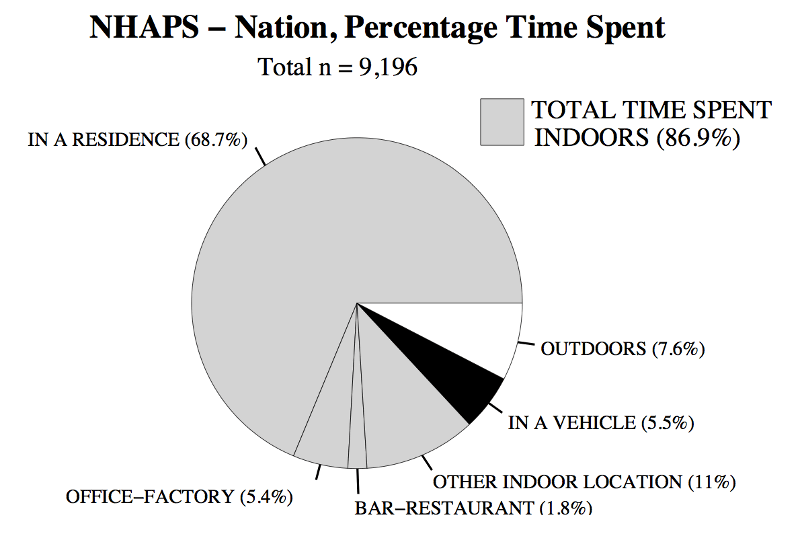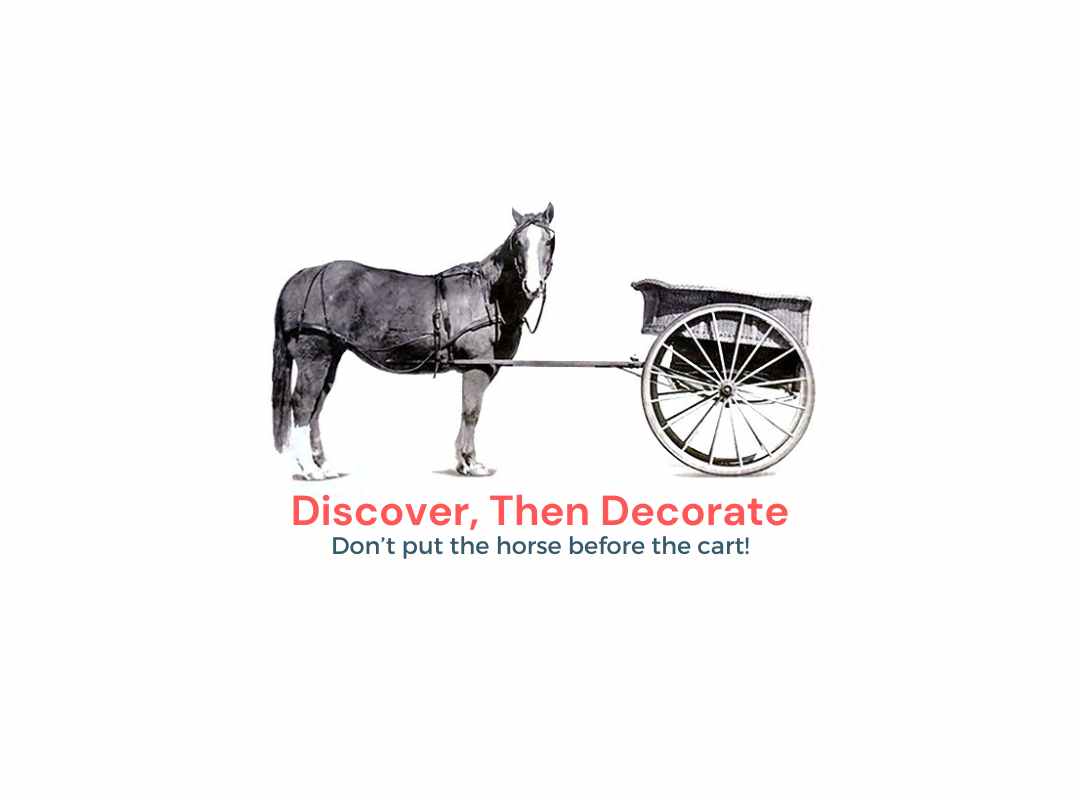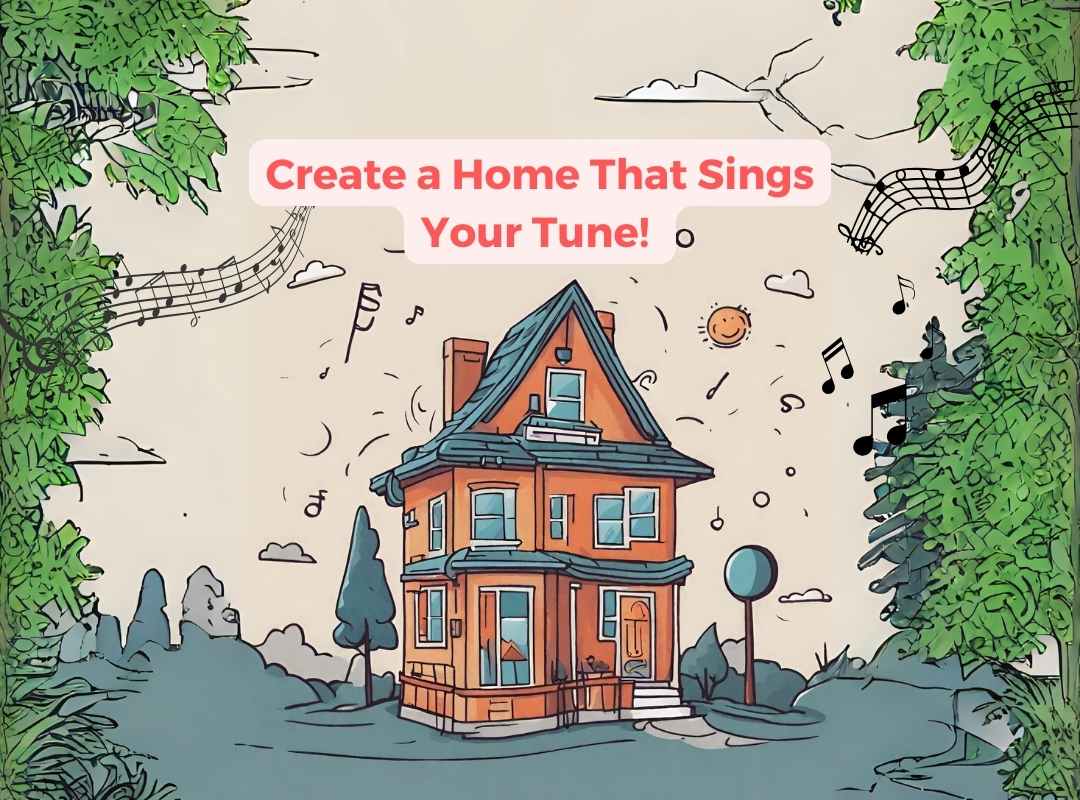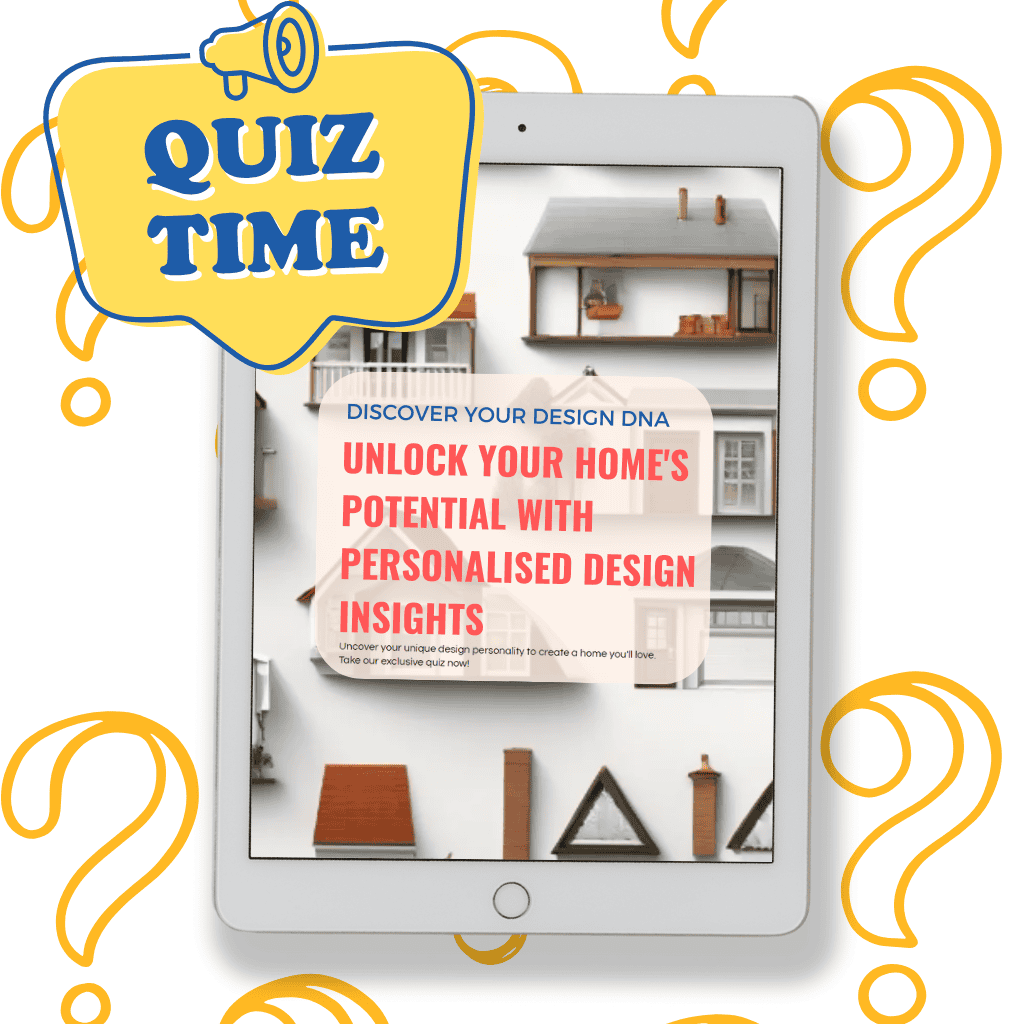If you are going to spend ~70% of EVERY DAY INSIDE your HOME – you better LOVE how it looks and makes you FEEL!
Kristina
When I first learnt the statistic that you and I spend ~70% of every day inside our home, I wondered if it was another urban legend. But it is not!
What makes it even more fascinating is that the percentage of time spent indoors in your home (across a wide number of countries) only varies slightly from 59.3% in Korea to 68.9% in New Zealand.
There are a number of different research papers on the subject: USA¹ in 2001, Canada in 2014, and New Zealand² in 2015. (Note these are pre-COVID – imagine what the stats would look like now that we are working from home more!)
As an aside, when you factor in time spent in your vehicle, at work, and other indoor locations, you end up with a whopping 86.9% of your time spent indoors every day. See the following breakdown:

Why is this important from your point of view as a homemaker?
Your Mental Health Is In Question!
Because your mental health is significantly influenced by your home. Interestingly, if you have more than six (6) rooms in your home, then you spend more time outdoors.
In a future blog, I will explore in detail the mental health implications revealed in other research that is also fascinating from a homemaker's point of view.
Meanwhile, think about this: when you walk into and spend time in each room of your home, it will invoke feelings and will change your attitude (regardless of whether you agree with those feelings or not).
I read an interesting case study (while formally learning about colour psychology by the founder of this seminal research, Angela Wright), about a homemaker who painted her kitchen a very bright yellow. She absolutely love it as it brightened her day (yellow is a cheerful colour).
What she didn’t realize was her husband’s design personality meant that particular bright yellow colour energised him. The longer he stayed in the kitchen, the more agitated he felt, and eventually confrontational and angry! I am guessing you would like to avoid any situation like this?
Your Opinionated Sister-in-Law (or “Helpful Neighbour”) Does Not Live In Your Home!
Unless you are in a home where the extended family also lives with you (rare in the Western world today), then you typically live with your partner and maybe your child(ren).
Once you are in the ‘empty nest stage’ of your family life cycle, then it is just you (and maybe your partner) now living in your home. At this point in time, your home (if it isn’t already) should be all about YOU!
Remember, no matter how opinionated your “friend who thinks she is being helpful by saying her truth” (aka the stereotypical ‘mother-in-law’) about “what you should or shouldn’t do in your upcoming room improvement project” – it is YOU that spends ~70% of every day inside your home – not them! Thank them for their opinion and then go with your gut instincts. Have an interior that is tuned to you (and your partner) specifically.
Interior Design Magazines & DIY TV Shows Are Trend-Driven – Not YOU Driven.
USA‘s Homes & Gardens magazine / Better Homes & Gardens magazine, or UK’s House and Garden magazine through to NZ and Australia’s version of these famous magazines, plus all of the spin-off TV shows like ‘The Block’ and ‘any of the 15+ different shows out of the USA have a completely different agenda to you renovating your home or that room improvement project you have been meaning to get onto over the last 5 years.
Why? Because these shows and magazines are either trend or money driven. Change the trend colour palette every year (like fashion) and you create a need in the marketplace to buy the latest. Flipping a home for capital gain is a financial decision. Watching people bitch and moan and fight is good for TV ratings (so they tell me), but you don’t want that in your home! (Let's hope not).
The key to a great interior is to get inspiration from these magazines, Pinterest, DIY renovation shows, etc., but understand your design personality first.
A Design Professional: Architect, Interior Designer, Kitchen Design or Landscape Designer Is Opinionated and Biased!
This is not a bad thing when you understand this bias. This is the basis of why we use a professional designer. We are drawn to their creative talents, their style and way of using space to transform and make something new and fresh, etc. (Especially if you are like my husband and many of my male friends. They can fix and build – but are not necessarily ‘creative').
However, because of the increasing amount of time you spend in your home (especially post-COVID with more work-time at home), and for all of the reasons above and below, it is very important that we first know our design personality bias first. Then, secondly, seek a design professional who either already matches our design personality, or, they are a ‘true professional’ designer who is able to design using any style preferences.
Here is an example of a designer who unfortunately does not realise their design personality bias. If you have been referred to me by a design professional, then they are aware of how important your design personality is.
A Builder, Decorator, and Painter Are Also Opinionated and Biased!
Just like a design professional, these people are also human and are a condition of their cultural and environmental upbringing combined with exposure to trends and past customers’ choices.
You The Homeowner Are Also Biased!
You didn’t think you were the only independent-thinking person among all of the people around you… (OK – you are much more independent in your thinking now that you have read this far into the article. 🥰 )
And this is the key – you want to know, with crystal clear design clarity, what these biases are – your needs wants, big dreams, must-haves and pet hates. You want to dig deep and reveal your design DNA – and then document it =- what I call your ‘unique home design personality'.
Your Disposable Income Is Smaller Than You Realise!
Most people underestimate how much disposable income their household has to spend on a room improvement project. Regardless of whether you do or you don’t, you want to minimize wastage through rework with your home renovation project.
A typical small room makeover is $15,000+. For an average-sized room makeover/renovation, you should expect to pay north of $50,000. Every building project wastes between 12.5 to 29.6% of your budget on embarrassing rework. ($15k = $4,440 wasted. $50k = $14,800). I am sure you get the picture?!
As I mentioned, this is not only embarrassing but also one of the contributors to stress surrounding any room improvement project. The crazy thing is that this rework comes in all shapes and sizes – from the wrong size sofa to the wrong paint colour, to everything in between.
Because you have a limited disposable income, it is important to get it right the first time. The danger is that the finished project can look amazing, clean, fresh, and Instagram perfect – however, if it doesn’t match your design personality, then you get a nagging feeling that “something is not quite right with this.” That’s what 42% of the thousand homemakers I researched unfortunately experienced over the ensuing months after completing their home improvement project. And you typically have to live with the problem – assuming you can pinpoint what is causing your unhappiness.
What Is The Solution? (If There Is One!)
As I have alluded to, there is only one solution that is cost-effective. I have created a course called your ‘Unique Home Design Personality’ that you do part-time over an 8 to 10-week period. At the end of this interactive hybrid programme (mix of video, workbooks, cheat sheets, LIVE Q&A Breakthrough sessions, etc) you then have choices:
- Option 1: Give a copy to your chosen design professional. They instantly understand you and your design personality. They can immediately tap into their creative talents, drawing upon the latest paints, wallpaper, lighting, room accessories, window dressings, etc to give you a space that screams YOU. You scream with delight; “I love it!!” for years into the future.
- Option 2: You are DIY or want to project manage and bring in 3rd-party contractors to do specific tasks. Excellent. Simply use your ‘Unique Home Design Personality’ like a compass to guide your decision-making to ensure you get it just right for you (and your partner). You finish the project still in love with your partner, and you both scream in delight; “We love it!!” for years into the future.
With either choice – you minimise rework and reduce miscommunication between you and all parties, as well as significantly reduce stress and overwhelm.
How do you start? Get your 3 Essential Prep Steps For A Successful Room Makeover how-to guide.
Next, learn more about your ‘Unique Home Design Personality’ course and put your name down on the waiting list. I will send you an email when the next one is about to start, and we will go from there.
100% satisfaction guarantee. If you have any questions, then please ask. Either I or one of Team Cope will help you.
I look forward to seeing you join the 24.6% of homemakers that love their finished home improvement project. They call themselves ‘Fearless Happy Homemakers‘®.









